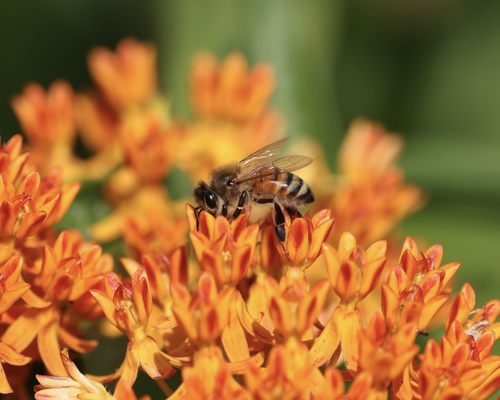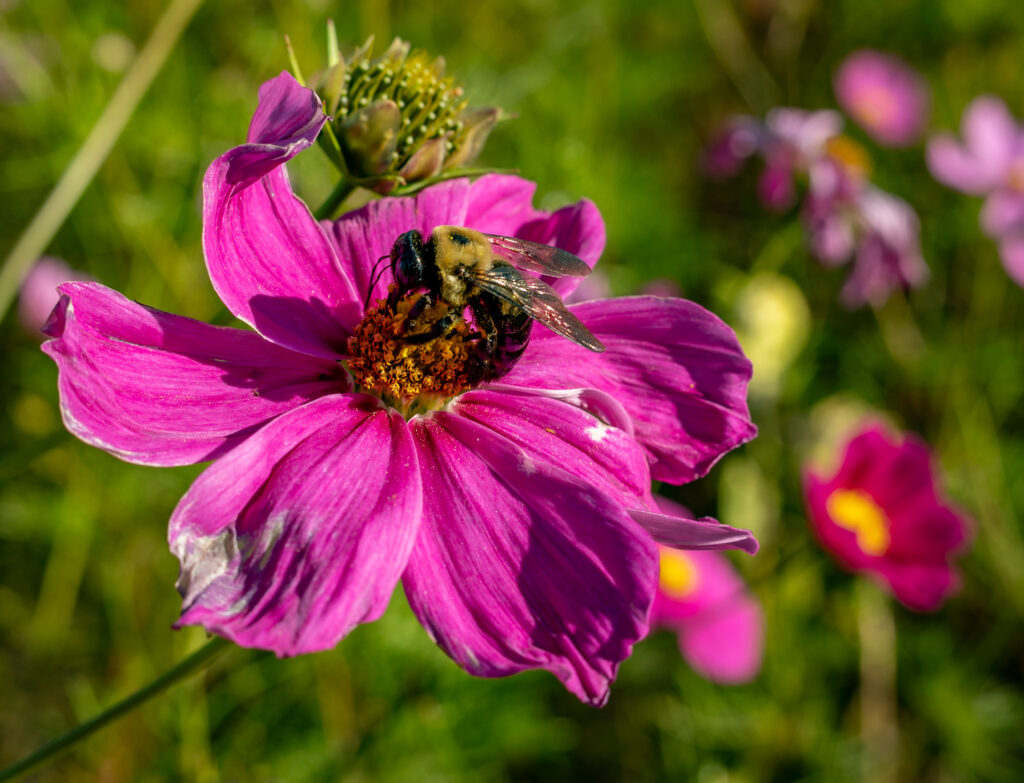
For most, the word pollinator often brings to mind a buzzing honey bee (Apis mellifera). While essential for pollinating many non-native crops in North Carolina, including blueberries, strawberries, and squash, honey bees are not native to North America. Introduced from Europe in the 17th century, this livestock species actively competes with native bees that are often more efficient at pollinating local flora. When not properly managed, honey bees can have a drastic impact on native species that rely on nectar and pollen.
In North Carolina alone, there are over 500 species of native bees. Among them are 15 species of bumble bees, the only native social bees in North America. Like honey bees, bumble bees live in colonies and exhibit division of labor. The remaining native bee species are solitary, meaning they do not live in hives.
Notable Native Bees:
- Eastern carpenter bee (Xylocopa virginica)
These bees nest by excavating dead wood and are great pollinators for tomatoes and eggplants.
- Sweat Bees (Family: Halictidae)
These small, often metallic-colored bees are named for their attraction to human sweat, which they seek for its salt content. On the coast of North Carolina, they are essential pollinators for the Venus Fly Trap.
- Leaf cutter bees (Megachilidae Megachile)
These bees nest in cavities that are lined with pieces of leaves and petals, which they cut from plants. They are particularly effective at pollinating hard-to-pollinate crops like apples and alfalfa.



While bees are known to be the most effective pollinators due to their deliberate collection of pollen, a pollinator can be any organism that helps carry pollen from the male part of a flower to the female part of the same or another flower. This includes a variety of lesser-known—but equally important—insects, birds, and mammals that help ensure the biodiversity of flowers, fruits, and vegetables in our region.
Other Insect Pollinators
In addition to bees, many other insects play a crucial role in pollination. Here are a few noteworthy examples in North Carolina:
- Wasps: While mostly predatory, many wasps seek nectar and pollen for supplemental nutrition and, in doing so, contribute to pollination.
- Ants: Known more popularly for their picnic infiltrations, ants are also pollinators of ground-level plants, such as North Carolina native Small’s Stonecrop (Sedum smallii).
- Beetles: As some of the oldest pollinators, beetles predate bees and remain vital for certain ancient flowering plants. For example, Southern Magnolias (Magnolia grandiflora) are primarily pollinated by sap beetles (Family: Nitidulidae).
- Flies: Flies are the main pollinators of plants with foul odors, such as North Carolina native Skunk Cabbage (Symplocarpus foetidus), Jack-in-the-Pulpit (Arisaema triphyllum), and Pawpaw (Asimina triloba).
- Butterflies and Moths: Butterflies pollinate during the day, while moths take the night shift. With over 170 species of butterflies and more than 1,200 species of moths in North Carolina, these winged insects support a wide range of native plant life.

Birds and Mammals
Let’s not forget the contributions of hummingbirds and certain mammals to pollination. The Ruby-throated Hummingbird is the only pollinating bird species native to the Piedmont region. Additionally, mammals such as bats, mice, and squirrels can act as incidental pollinators when pollen gets trapped in their fur and transferred from flower to flower.
Creating Space for Native Pollinators
Supporting native pollinator populations is a core part of Triangle Land Conservancy’s (TLC) land management strategies. In TLC’s western region, restoration projects at Brumley Preserve’s North section and Horton Grove Preserve were launched to benefit pollinators and other wildlife, strengthening the overall biodiversity and ecological function at these sites.
In the east, at Williamson Nature Preserve, TLC planted 400 native trees and shrubs with a focus on nectar-rich and host plant species. Within the same project, TLC also established a 5-acre meadow habitat featuring native grasses and forbs. Additionally, don’t miss the 1-acre wildflower meadow along Walnut Hill Way, seeded with a variety of native perennial wildflowers.


The next time you visit a TLC nature preserve, keep an eye out for pollinator diversity. Snap a photo and tag us on social media to share the pollinator love!
